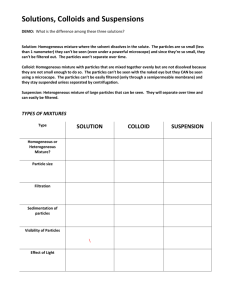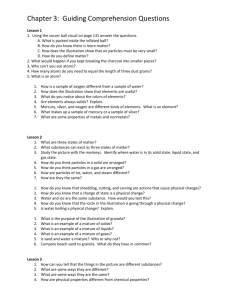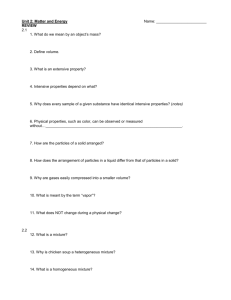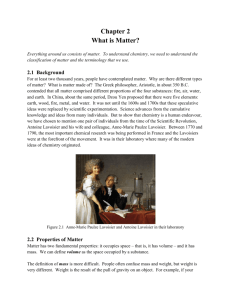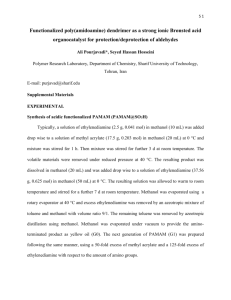-Hemicage Complexes
advertisement
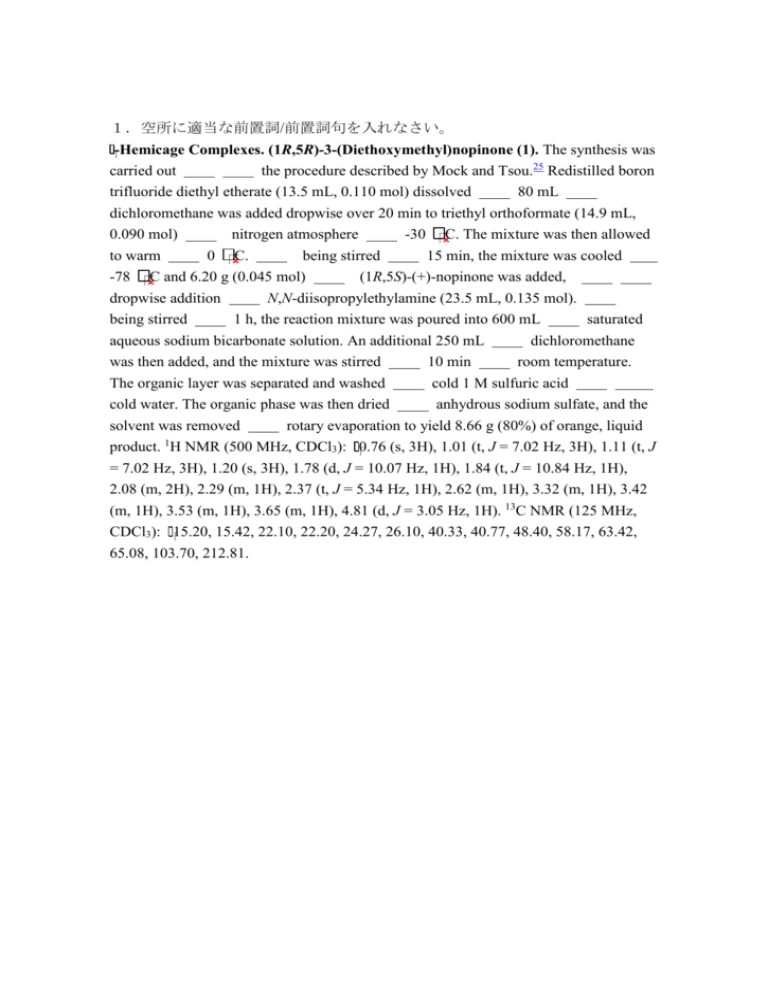
1.空所に適当な前置詞/前置詞句を入れなさい。 -Hemicage Complexes. (1R,5R)-3-(Diethoxymethyl)nopinone (1). The synthesis was carried out the procedure described by Mock and Tsou.25 Redistilled boron trifluoride diethyl etherate (13.5 mL, 0.110 mol) dissolved 80 mL dichloromethane was added dropwise over 20 min to triethyl orthoformate (14.9 mL, 0.090 mol) nitrogen atmosphere -30 C. The mixture was then allowed to warm 0 C. being stirred 15 min, the mixture was cooled -78 C and 6.20 g (0.045 mol) (1R,5S)-(+)-nopinone was added, dropwise addition N,N-diisopropylethylamine (23.5 mL, 0.135 mol). being stirred 1 h, the reaction mixture was poured into 600 mL saturated aqueous sodium bicarbonate solution. An additional 250 mL dichloromethane was then added, and the mixture was stirred 10 min room temperature. The organic layer was separated and washed cold 1 M sulfuric acid cold water. The organic phase was then dried anhydrous sodium sulfate, and the solvent was removed rotary evaporation to yield 8.66 g (80%) of orange, liquid 1 product. H NMR (500 MHz, CDCl3): 0.76 (s, 3H), 1.01 (t, J = 7.02 Hz, 3H), 1.11 (t, J = 7.02 Hz, 3H), 1.20 (s, 3H), 1.78 (d, J = 10.07 Hz, 1H), 1.84 (t, J = 10.84 Hz, 1H), 2.08 (m, 2H), 2.29 (m, 1H), 2.37 (t, J = 5.34 Hz, 1H), 2.62 (m, 1H), 3.32 (m, 1H), 3.42 (m, 1H), 3.53 (m, 1H), 3.65 (m, 1H), 4.81 (d, J = 3.05 Hz, 1H). 13C NMR (125 MHz, CDCl3): 15.20, 15.42, 22.10, 22.20, 24.27, 26.10, 40.33, 40.77, 48.40, 58.17, 63.42, 65.08, 103.70, 212.81. 2. 次の文は順不同に並んでいます。特に文頭と文末のフレーズに注意を払いな がら、順序を正しく並べ替えてください 2.1. Preparation of the PE@SiO2 Particles. Preparation of LDPE@SiO2 Particles. (A) In a typical procedure (sample 7, Table 1 ), 0.2 g of LDPE (density of 0.932 g/mL, melting index of 55 gr/min, Aldrich) and 0.05 g of the surfactant PE-b-PEG (Mw 1400, PE/PEG = 1:1 by weight, Aldrich) were placed in a vial and were heated until melting, then 4.0 mL of boiling xylenes was added (137-144 C) until there was a full dissolution of the melt (at least 20 min). (B) To this hot solution, the boiling hydrophobic phase was added quickly dropwise and under vigorous stirring, and the mixture brought close to its boiling point (~78 C). (C) For collecting and cleaning the particles, the resulting dispersion was centrifuged at 6000 rpm for 20 min and the precipitate redispersed in either water or ethanol. (D) To this hot solution, 2.0 mL of TEOS (Aldrich) was added and mixing continued until a clear solution was obtained. (E) For characterization purposes, the powder was dried at 100 C for several hours. (F) After the addition, a stable emulsion formed immediately that was allowed to boil for about 30 min, and then the emulsion/dispersion was allowed to cool slowly under mild stirring (magnetic stirrer) for 18-24 h while the particles continued to form. (G) The dispersing hydrophilic phase was prepared by mixing 50 mL of ethanol (or 2-propanol, see Table 1) with 30 mL of ammonium hydroxide solution (25% by weight NH3) followed by heating the solution to the boiling point. (H) From thermal gravimetric analysis (TGA) (see below), the composition of the final particles is typically 1:~2 by weight. Other surfactants, listed in Results and Discussion, were tested by similar procedures either with tetramethoxysilane (TMOS) or with TEOS, but none lead to satisfactory results. For blank tests, the surfactant was entrapped within silica without PE using the same procedure. Table 1 contains other tested compositions that led to the particles formation.





